Trinidad Head Lighthouse is 150 years old
California Coastal National Monument
(Map link.)
Trinidad, with its sheltered bay, was a hub of activity in the 1850s. Founded April 8, 1850, it is the oldest town along the northern California coast. After a rather astonishing loss of life considering the size of the population, it was determined that a lighthouse should be built on the headland that protects that bay. The light was first lit on December 1, 1871, which makes this it's 150th year in operation. As such, a little extra activity was planned around the regular first Saturday of the month opening day. It is 3 days late, but when you've had that many years, a handful of days just slide. They planned to stay open 10AM-3PM rather than the usual 10AM-noon and had a few extra activities planned around it. People do seem to love the lighthouse and I was a little worried that it might test the parking area by the harbor, but there was plenty of room at the start. I was also needlessly worried about the king tides, which still had half an hour to reach their 8.5 foot high for the day, but the rather calm sea was making no threats. I just barely caught the naturalist lead hike out to the lighthouse that started with the opening.
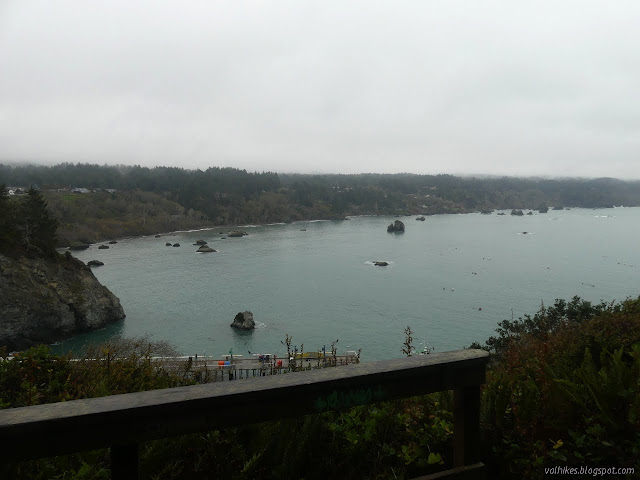
At the lighthouse, the local news was busy interviewing folks with some connection to keeping up the lighthouse and the trails around it. Our naturalist, having finished getting us there, got sucked up into their little whirlwind of activity as a representative of the Trinidad Coastal Land Trust, which was clearly not something she'd planned on happening. The Coast Guard had a pair out to talk about the continued importance of lighthouses, even in a world with GPS. The archeologist was setting out pieces of history found at the site that we could handle, and telling about each one as she did. There were a couple binders of historic photographs floating around. The lighthouse itself was open to tour, and for those waiting their chance, there was even a living history performance.

I didn't have to wait too long to go in. The ground floor is a tiny square of mostly empty space with a window to look out over the ocean. It gives a protective space to climb the ladder to the light. The ladder is so steep, I knocked my shins on it with every step. The top level for the light has windows all around. The light with its clockwork and gas pipes and bearings, all a little different, were removed when the lighthouse was automated in 1974, when it had already been in operation for 100 years. It now just houses switches. The current light is outside, set away from the structure slightly. A crawl door to access the walkway around the windows was propped open to get a little air inside, but a sign made it clear that wasn't part of the area we were allowed to go.
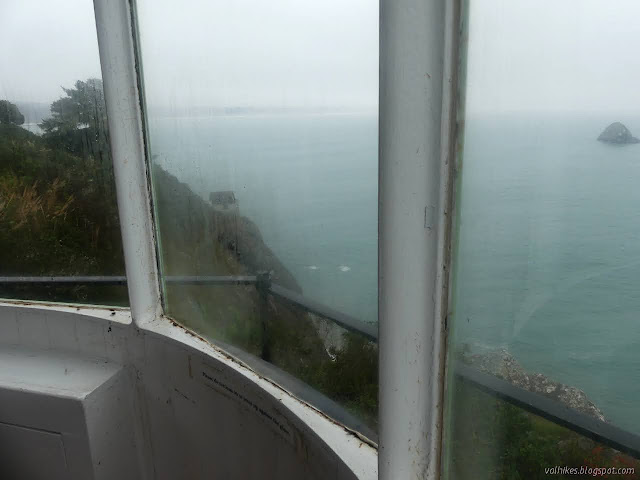
With a little more care, I managed to halve the bangs to my shins on the way back down. I looked at many of the photographs and craned my head over the path to the bell house. It is the original that housed the fog bell, built in 1898. The current fog horn is set next to it. It is also among the places we weren't allowed to go. The old wooden steps down to it are getting a bit dangerous. Other than that, only the second water tower, built when they discovered a spring and no longer needed to catch rainfall, remains. The original dwelling, joined by a second when the bell was installed, was removed to build a triplex for the Coast Guard when things were automated and now the triplex has been removed too. There is just a grass lawn now.


The news crew had finished forcing unsuspecting people into interviews, but the YouTube stars were chatting cheerfully with their phones or desperately hoping for an "action shot" of the lighthouse with clouds blowing past it. The overcast had lifted far enough to see the coastline and that's about all it was planning for the day. It actually was an extra nice day with very little wind. I took off and made the turn to follow around the loop to enjoy it. As is my usual, I tagged the peak.

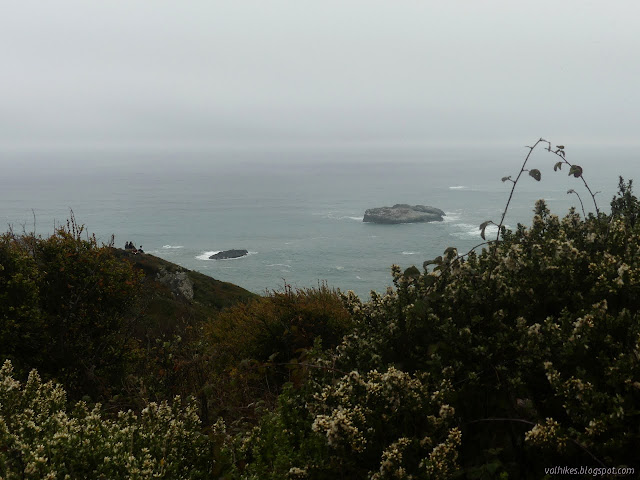
Then I dropped back down and proceeded around the loop. I stopped by the lighthouse overlook, a small platform near the cross, and found that you can just barely see the top of the lighthouse if you know what you are lookin for.
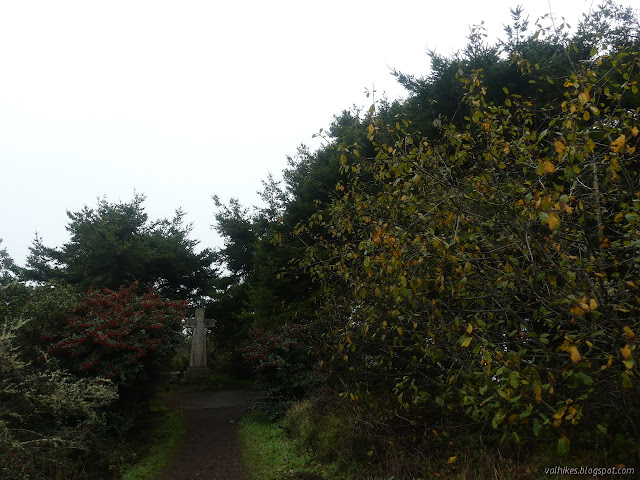

I kept on rolling around, taking the short spur to that rocky overlook I was overlooking from the top. It does have a bit better view.

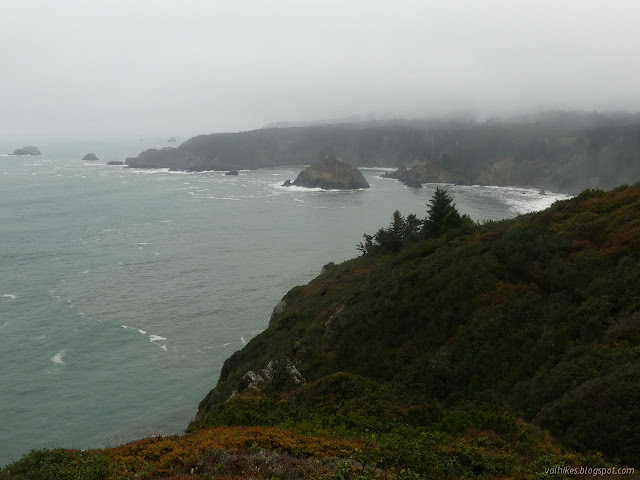
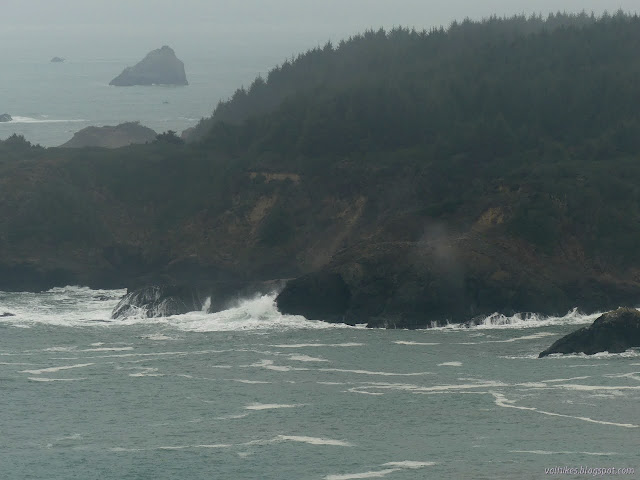
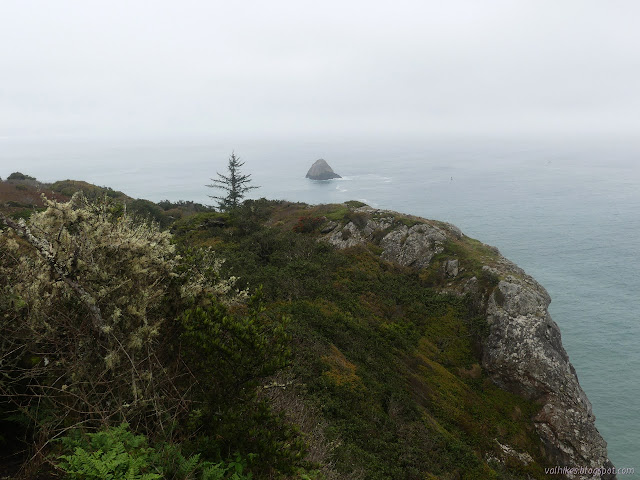
Then I continued. The brush is generally high, sometimes arching overhead, along much of the trail. I skipped one more spur before stopping at the overlook next to where the loop finishes.
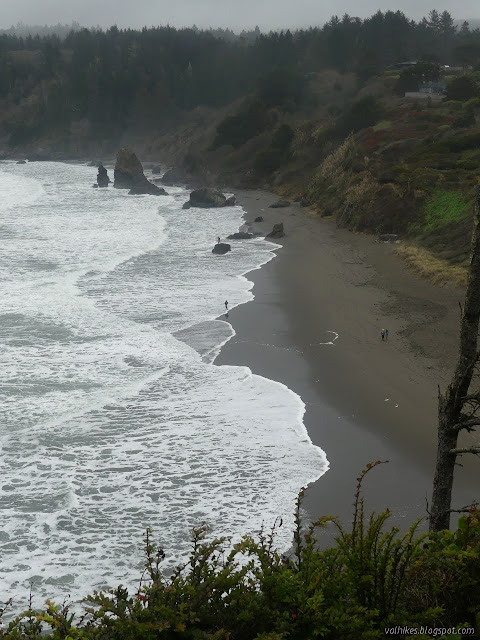
Then I dropped back to the parking lot. It's only about two miles around with the spurs.
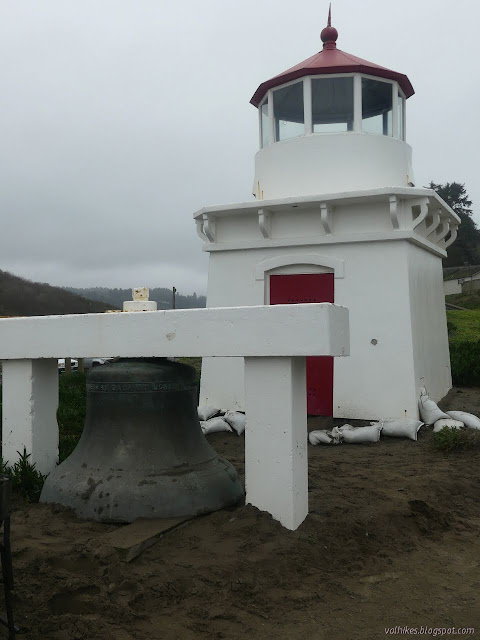
*photo album*
©2021 Valerie Norton
Written 8 Dec 2021
Liked this? Interesting? Click the three bars at the top left for the menu to read more or subscribe!




Comments
"I paid my visit to the lighthouse, which occupies a striking position on the face of the almost perpendicular headland. It is a "fourth order" station, employing a total force of one man. The present keeper has been in charge for twenty-three years, and, for a wonder, had no desire for a change. The other lighthouse men I had talked with were almost to a man living in hope of being transferred to other posts, which is natural enough, considering the loneliness and monotony of their lives."
He was there in late October 1911, which is after the fog bell was added and the keeper should have had some help. This site lists off the keepers and assistants, and has a good deal more of interest to say of the lighthouse. Chase would have been meeting Frederick L. Harrington, who ultimately served for 28 years. This is the Harrington who rode out a storm a few years later that tossed up a wave that put out the 200 foot high light and got it going again in short order. (A dramatic story told often about this lighthouse that I managed to resist telling until this mention.) Indeed, the list of assistants has a break. Edward D. McCrea left sometime in 1911, while Clinton E. Harrington and then Hebert S. Bishop started up in 1914. There were frequent breaks before 1914, but not after. That's when the wave struck.
Trinidad had a couple other lighthouse keepers with impressively long tenure.